How Long to Hold Yoga Poses for Flexibility:
The choice of practice as a form of exercise is due to the flexibility that people opt for in yoga. In other words, flexibility is one area of fitness in which yoga is a useful tool for unlocking new range of motion, helping to avoid physical injuries and increase physical comfort in one’s movement. But here the flexibility is defined not duration of stay in each position.
Yoga can be a great exercise for increasing flexibility, maintaining balance, and reducing stress for many people; in this ultimate guide, we’ll take a look at how long you should hold yoga poses so that you can get the most out of your practice, including the most effective stretches and poses to target particular muscles. We will then give you a breakdown of each of the poses so that, as you go through the video, you can be guided through to improve your practice.
How Long to Hold Yoga Poses for Flexibility:
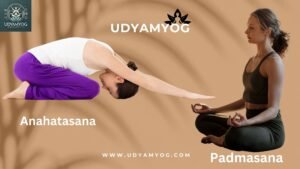
Why do Holding Poses Increase Flexibility?
It means when you are doing a particular post, you preserve the stretch and let muscles of the body to decompress over time. An exciting thing about flexibility is that it cannot be achieved within the first few weeks let alone days, it requires time, time for deep breathing, time for the stretches. Holding a pose for longer durations: Improves muscle elasticity: Static stretching makes muscle fibers to stretch for longer times, thereby helping to gain flexibility the longer you take.
Promotes relaxation: Standing in one position and taking deep breaths informs the autonomic nervous system that the muscles lack stiffness, hence should relax. Prevents injury: It helps to decrease the probability of the development of joint and muscle injuries because it enables activity within a joint’s full range of motion.Encourages mindful movement: If the body remains in a given pose for instance ten minutes longer, it is easy to focus on areas that need special attention due to stiffness.
How Long Is Too Long for Holding Poses for Flexibility?
To build flexibility to the optimal level you should hold the yoga position for at least 30 seconds to 2 minutes depending on your flexibility level. The longer the time you spend in a pose, the longer your muscles adapt and the more flexibility you may gain.
Beginner: Maintain each position for 30-45 seconds. This can help provide your muscles enough time to stretch without feeling the intensity of the exercises or anyone, feeling the pull of any particular muscles.
Intermediate: Stay in each of the stretches for 1 to 2 minutes since the objective here is to increase flexibility.
Advanced: The length of time which one will hold each position is should be 2-3 minutes or more especially while practicing restorative or yin styles where stretching is chief.
How Long to Hold Yoga Poses for Flexibility:
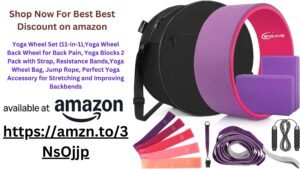
Yoga Exercises and the Duration for Performing Them
Now it’s time to discover some of the most recommended procedures for getting more flexible muscles through yoga. All of these poses apply forces on various muscles to achieve the important full body stretch.
-
The Plank or Press Up Position
Downward Dog is a very effective full body stretch which indeed works on hamstrings, calves, shoulders or lower back. It is highly beneficial when it comes to stretching the spine and legs muscles.
How to Hold for Flexibility:
Beginner: Holding stimulus for 30 seconds with the increase up to 1 minute.
Intermediate/Advanced: Lengthen the hamstrings and spine – hold for 1 to 2 minutes.
Steps:
- Kneel on both your knees and your hands with your palms on the floor.
- Fold your legs from the knees bending down and taking the heels towards the buttocks as far as possible, you will look like an ‘A’ shape by lifting your upper body off the ground.
- Flatten your hands on the floor and straighten your back as much as possible and now imagine lowering your heels towards the floor.
- Take a deep breath and try to lengthen up through the spine and out through the legs in this position.
- How Long to Hold Yoga Poses for Flexibility:
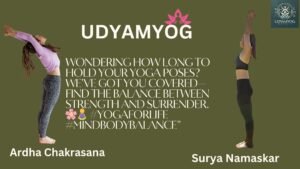
-
All the Information on Seated Forward Bend (Paschimottan asana)
This pose stretches the hamstrings, the lower back area and spine. It is a critical pose for stretching the legs muscles and extending a lot of tension on the back part of the body.
How to Hold for Flexibility:
Beginner: The time for holding can be 45 seconds to 1 minute.
Intermediate/Advanced: Duration for holding will be between one and three minutes to enhance the stretch.
Steps:
- With your back straight sit on the floor and place your legs in front of you, with your feet flexed.
- Intake of breath, vertically extend the spine, and take the arms up.
- Breathe out, bend your body from the waist, and use your hands to try to touch the sole of the feet, ankles or shins.
- Maintain the spine in a line and if necessary, use the knee joint to make some slight flexion to avoid using the back.
- If you are holding the stretch then try to take deep breaths as the hamstrings gradually lengthen.
- How Long to Hold Yoga Poses for Flexibility:
- How Long to Hold Yoga Poses for Flexibility:
-
Cock-on-Head-Asana, Pigeon-on-Head-Asana or Shankukut asana
Increasing the flexibility of the glutes, the external hip rotators and the quadriceps, this posture also offers great benefits in helping to loosen tight hip bones or ilio-femoral ligament usually called the “pigeon”. This is especially helpful if you are sedentary a lot during the day, at the computer, in a car, watching television etc.
How to Hold for Flexibility:
Beginner: Stay on each side for about 30-45 seconds.
Intermediate/Advanced: It is recommended to normally stay here for 1-2 minutes on a side so that the hip muscles have a deep stretch.
Steps:
-
Beginners, be seated on the back of the right elbow or on your back in the starting position, and slide the right leg forward up to the right wrist.
-
Slide your left leg in the back of your chair, while ensuring the top of your left foot remain flat against the mat.
-
Tuck your hips directly over the front of the mat and then lower yourself down on the mat on your forearms or front forehead.
-
Take a deep breath and feel how your hips loosen up in this position when holding this pose.
-
Supta Padangusth asana – Reclining Hand to Big Toe Pose
This pose is good for the hamstrings, calves, and lower back and one of the best exercises to increase leg flexibility.
How to Hold for Flexibility:
Beginner: Press down and hold for 30 seconds to 45 seconds on each side.
Intermediate/Advanced: Wait for 1-2 minutes with each side down.
Steps:
- Stand 10-15 minutes away from the wall, put your legs as straight as they can be, and then lie down on your back as much as you can.
- Breathe in and press your left foot onto the ground, reach your right leg up high, as far as you can.
- Support your right foot or ankle should you need help with the balance or use a yoga strap.
- Tuck your spine down and emphasize shoulders slightly, pulling the right lower leg towards the abdominal area.
- Continue standing on both feet and remain with your arms stretched out to the side, bend down and switch sides and breathe.
- Butterfly Pose: This general stretching asana helps the body by stretching the inner thighs ‘adductors’, muscles that extend down the spinal column as well as the rear after you have had a long day working at the computer or any strenuous activity on the spine.
It is also good if one wants to produce an intense stretch at the inner thighs, hips and groin regions. It is one of the basic body postures the can help increase the flexibility of the lower body extremities.
How Long to Hold Yoga Poses for Flexibility:

How to Hold for Flexibility:
Beginner: Hold for 30-45 seconds.
Intermediate/Advanced: Hold for 1-3 minutes.
Steps:
- Sitting with your legs stretched out in front of you.
- In a bicep squat bring the soles of your feet together and allow your knees to drop to the sides.
- Hold your feet or ankles and come up on your sit bones, elongating your spine.
- To get a more intense workout hold their back and gently fold down the front.
- Stand in the position, breathing in and out, and trying to enjoy the sensation of relaxing hips and inner thighs muscles.
- Lizard Pose or Utthan Pristhasana
Many students have found that Lizard Pose helps to effect hip, hamstring, and groin elasticity to a very large extent. At the same time, it is most helpful for people who aim at enhancing their facilities concerning mobility of the lower extremities.
How to Hold for Flexibility:
Beginner: Because vacuum sealing involves ratcheting down pressure and pulling a vacuum on both sides of a bag, this may take 30-45 seconds per side.
Intermediate/Advanced: This should be for a minute to two per side.
Steps:
- Start with the stance in a low lunge, your right foot in front and your left knee on the floor.
- Place your lower hands or forearms in the mat inside your right foot.
- While maintaining the pose ensure your back leg is stretched out fully, and tuck your belly in as you induce core muscles.
- End the stretch with your hips being twisted, and your hamstrings being elongated, then repeat the procedure on the opposite flank.
- Samastitihit Asana
This asana stretches the hamstrings, calves and lower back muscles, and is done after standing or sitting and with feet hip-width apart. This is a basic posture helpful in trying to enhance flexibility of the back of the body.
How to Hold for Flexibility:
Beginner: Hold for 30-45 seconds.
Intermediate/Advanced: Hold for 1-2 minutes.
Steps:
- Start with your feet shoulder-width apart but more like hips or slightly wider and your arms by your side.
- Breathe in deeply, stand tall, and breathe out as you bend down in the hip’s flexors direction.
- Lower your head down with your hands and loosen your arms, position them like you’re trying to grab the floor or hold your ankles.
- It is especially important for your lower back not to become stiff or strained: you may need to hold a small amount of bend in your knees if so.
- Now take a deep breath, and try to relax your hamstrings and lower back as the you stand there.
Suggestions for Flexibility of the Yogic Process
-
Breathe deeply: The simplest and most effective instrument you have in the fight to increase your flexibility is your breath. Take your time through the stretch and breathe through your nose and out your mouth with your mouth open.
-
Warm up: Before you begin a deep stretch, it’s always a good idea to do some kind of warm-up, such as Cat-Cow or Sun Salutations.
-
Use props: Yoga classes should not be a problem to do and in case you find it difficult to stay longer on a certain pose, do not be afraid to use the blocks, strap or blankets to get an added support while holding the pose.
-
Consistency is key: Thus, flexibility increases with increasing practice in performance. Practice these poses several times a week to see any positive change in the long run.
- How Long to Hold Yoga Poses for Flexibility:
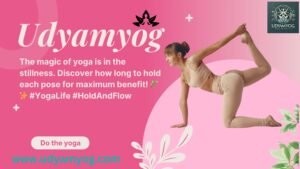
How Long to Hold Yoga Poses for Flexibility:
Conclusion
In the case of flexibility, the duration that one spends in a position like a yoga pose is of uttermost importance. Such positions are best held for 30 sec to 3 minutes with it providing the benefit of your muscles as well as your range of motion gradually unlocking over time. If you try these main yoga poses with an emphasis on the proper breath, you will be both physically and mentally freed up.
Bear it in mind – flexibility is a process, and it has no timetable. Yoga will provide you with remarkable results in your chosen areas and will also enhance your repertoire of movements for everyday life. So, grab your mat and start
How Long to Hold Yoga Poses for Flexibility:

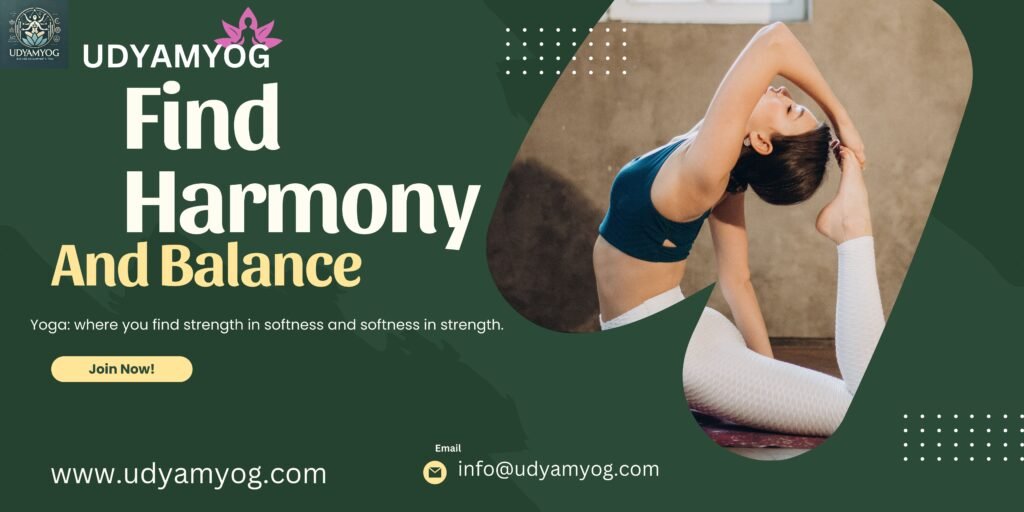
2 thoughts on “How Long to Hold Yoga Poses for Flexibility:”